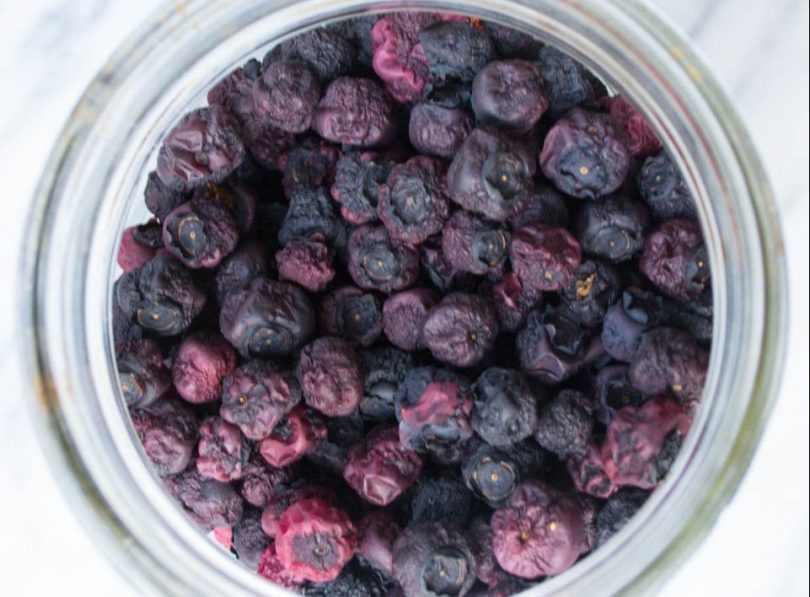Learn ho to dry blueberries at home!
Blueberries are so versatile that they’re easily added to a lot of dishes and foods like pancakes, salads, and cereal. Some people even like to snack on them on their own. They’re obviously delicious when they’re fresh. However, they can only last up to two weeks in the fridge. This is where drying blueberries come in handy. With drying, their shelf life prolongs which can avoid wastage.
READ ALSO: 7 Health Benefits of Dried Blueberries
How to Dry Blueberries
There are many ways to dry blueberries. Here are some of the easiest methods anyone can do at home.
Drying blueberries in the oven
For this method, you’ll only need a baking sheet, some parchment paper, and an oven.
- Begin with rinsing the blueberries. Pat them with paper towels to dry or simply air dry them.
- Preheat the oven to 225F (100C).
- Place the blueberries on a baking sheet lined with parchment paper.
- Dry the blueberries in the oven for about 3 hours. You can keep the oven door slightly open for better air circulation.
Once shrunk and dried, remove from the oven and let them cool.
Drying blueberries in the dehydrator
A food dehydrator is a special kitchen tool that draws out the moisture from food. Using a dehydrator is another way to dry blueberries.
- Thoroughly wash the blueberries. Let them dry completely.
- Set them in a single layer on the dehydrator trays.
- Set your dehydrator to 115F (45C) – please read the manual as well – the correct temperature depends on a dehydrator model.
The process may take anywhere between 8 to 18 hours, sometimes even more. Make sure to constantly check on the blueberries to check if they’re already done.
Air-drying blueberries
A cost-effective way of drying blueberries is air drying. However, this method might only work in areas with a dry climate.
- Prepare drying screens where the blueberries will be placed. For mass air drying, some people even make or buy special drying racks. They’re used to save space by being able to stack the drying racks on top of each other. But, they still have enough room for air circulation.
- Wash the blueberries, then place them on the drying screens. It’s best not to crowd the drying racks to allow air to circulate better.
- Place the drying screens with blueberries in a dry area away from any pests or animals.
It may take several days to dry the blueberries, so make sure to check on them constantly. Check for any blueberries that may be spoiling, and remove them.
Sun-drying blueberries
Another drying method that’s cost-effective is sun drying. Like air drying, sun drying would require specific climate and weather conditions. This is best done during hot, sunny, dry, and breezy days.
- Prepare several drying screens. Then, wash the blueberries well and place them on the screens.
- Place the drying screens in an area where the blueberries can have direct sunlight.
- Place some blocks on two sides of the drying screens giving space for air to flow underneath.
- Be aware of animals like birds and try to device a way to keep them away from the blueberries like covering them with cheesecloth.
These may take several days to dry. Keep in mind to always take them inside in a dry area at night to avoid remoistening the blueberries.
Storing Dried Blueberries
Use an airtight container to prevent molds and moisture from spoiling the dried blueberries. Containers made from glass are the best to use. Place them in dark, cool places away from heat and direct sunlight. Better yet, place them in the freezer. Environmental factors can easily spoil dried blueberries. Make sure to keep them secured from these factors.
READ ALSO: How to Store Dried Blueberries
Once they’re dried and stored properly, the blueberries could last for a year or even more.
READ ALSO: How to Dehydrate Food Successfully: A Beginner’s Guide





